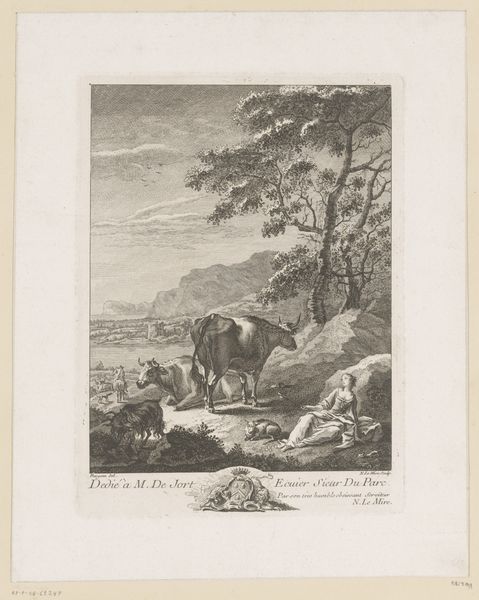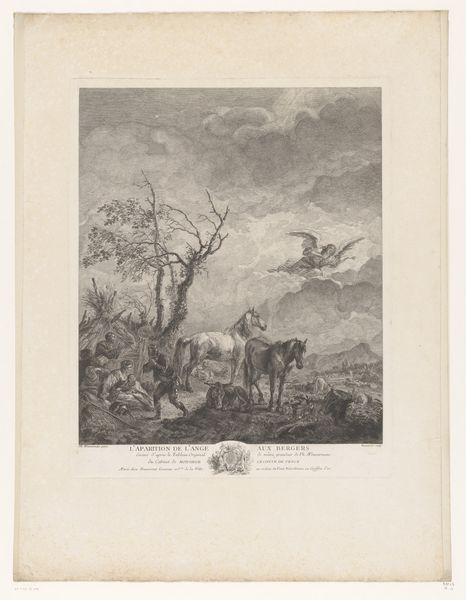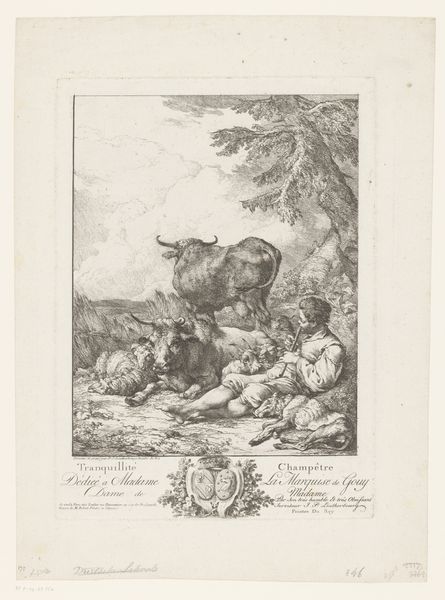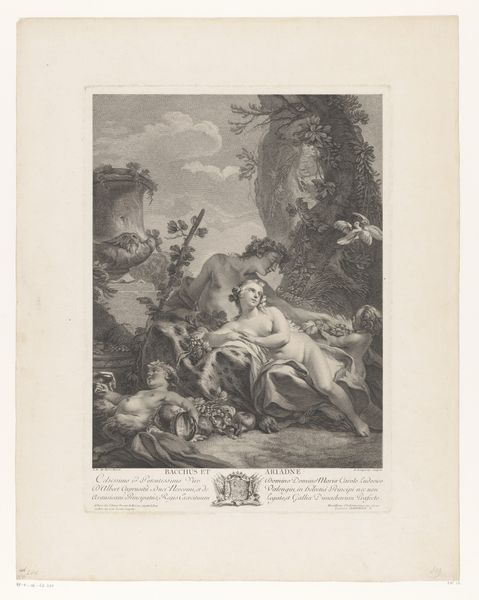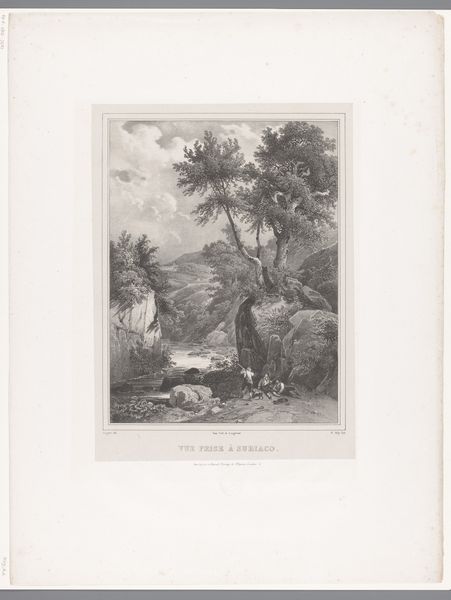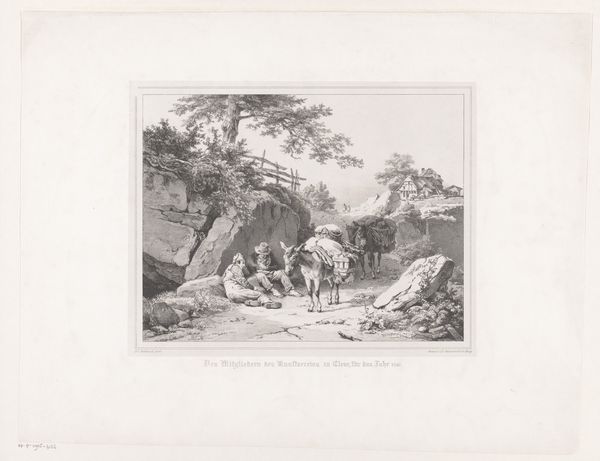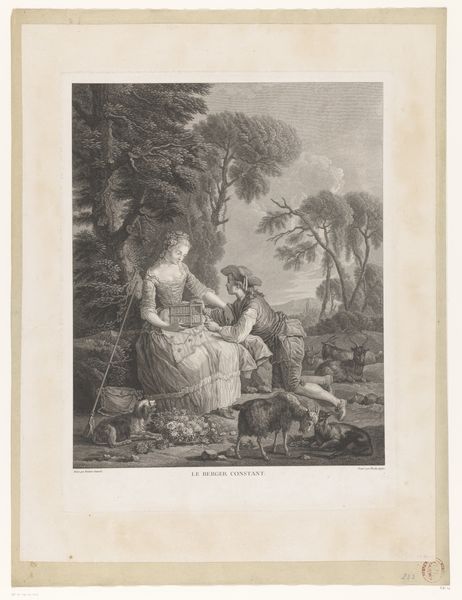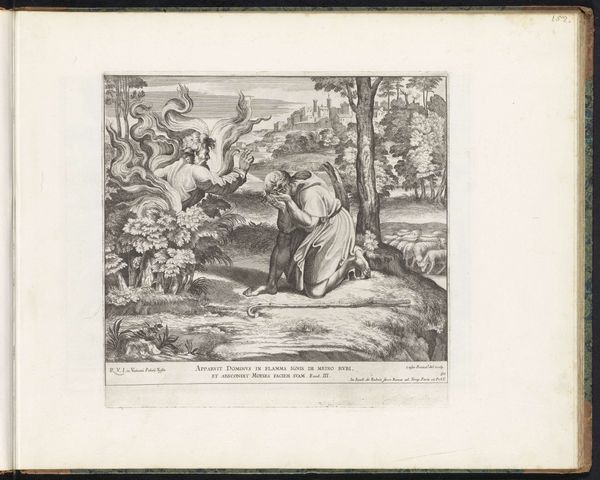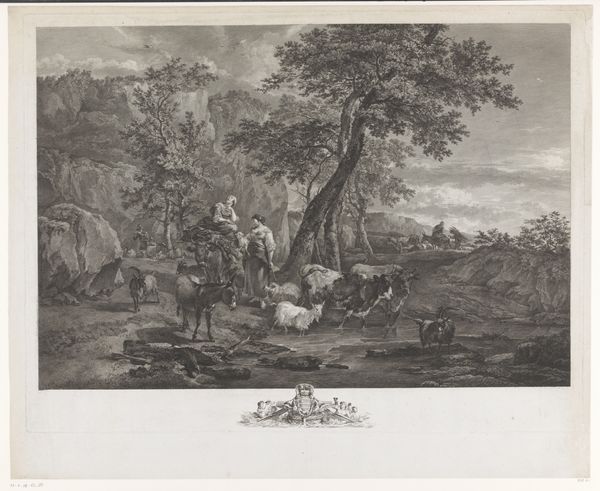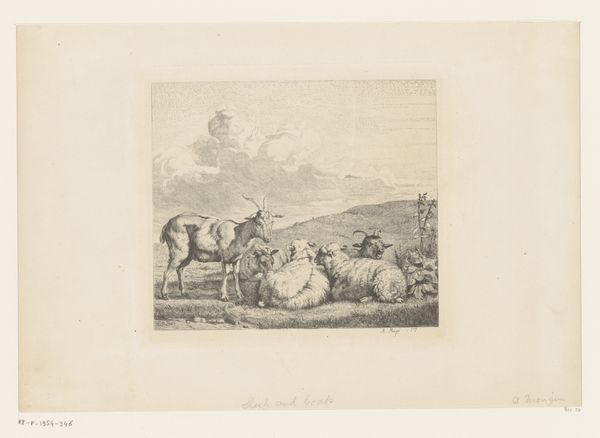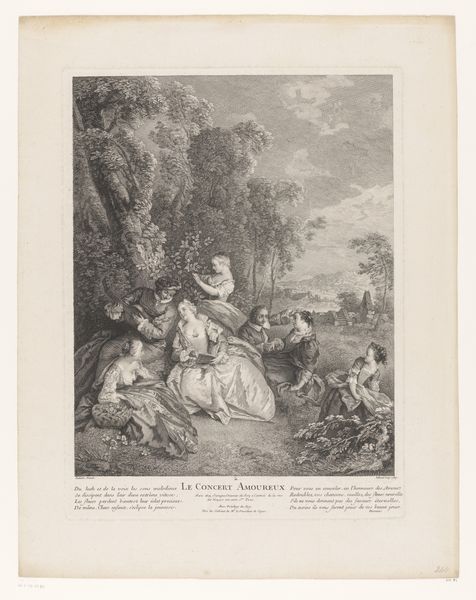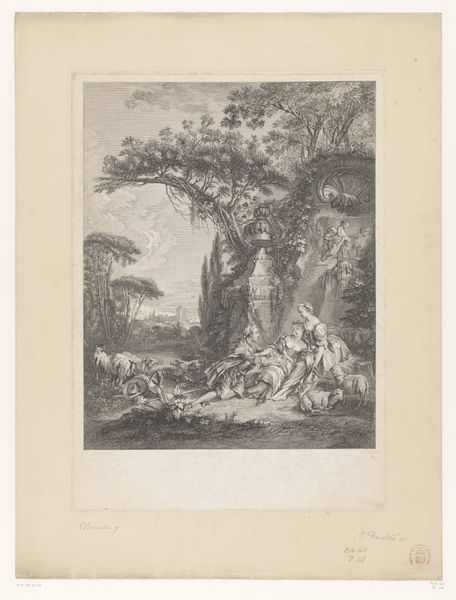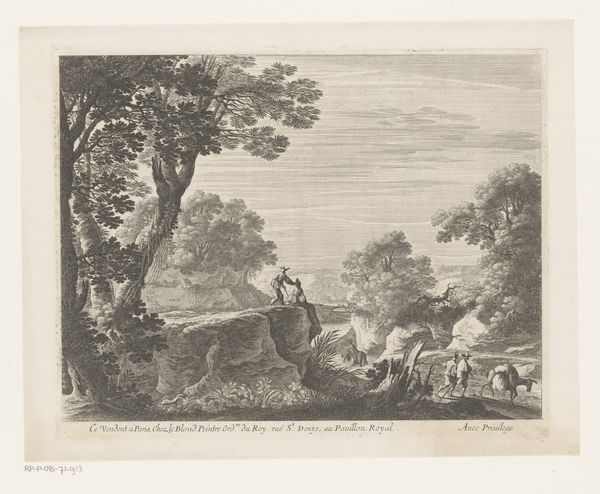
Landschap met herder en vee bij een brug over een waterval c. 1760 - 1764
0:00
0:00
noellemire
Rijksmuseum
Dimensions: height 244 mm, width 184 mm
Copyright: Rijks Museum: Open Domain
Editor: We’re looking at "Landscape with Shepherd and Cattle by a Bridge over a Waterfall," an engraving by Noël Le Mire, dating back to the 1760s. The detailed lines give it a calm, pastoral feel. How do you read this piece? Curator: Considering this print from a materialist perspective, the very act of engraving speaks volumes. The labor involved in creating these detailed lines, the repetitive motions… It wasn't just about aesthetics. This piece and similar artworks facilitated the distribution of images to a wider audience, creating a kind of visual market. The image becomes a commodity itself, circulated and consumed. What does this circulation say about artistic labor during this period? Editor: That’s a good point. I hadn't thought about the labor involved. Does the choice of landscape have any significance in the material context? Curator: Absolutely. Landscapes, especially idyllic ones like this, often served as visual representations of land ownership and rural economies. Think about who would be commissioning and purchasing these prints – the landowning gentry, the burgeoning merchant class… They’re literally buying and consuming an image of their aspirations and their connection to land and labour. Can you consider how that is expressed in the artistic choices? Editor: I see... So the landscape itself becomes a symbol of wealth and power, reproducible and consumable. The detail of the animals suggests a healthy livestock. And that bridge perhaps implies infrastructure. Curator: Precisely! The print becomes more than just a pretty picture; it becomes a material object embedded within complex economic and social networks. Examining the materials – the paper, the ink, the copperplate – reveals the technological advancements and economic structures of the time. What did you learn while analysing this artwork through this new perspective? Editor: That’s a really interesting perspective. Looking at it from a materialist lens changes everything – I now see it as a record of labor and class relations of the time. Thanks for broadening my perspective.
Comments
No comments
Be the first to comment and join the conversation on the ultimate creative platform.
